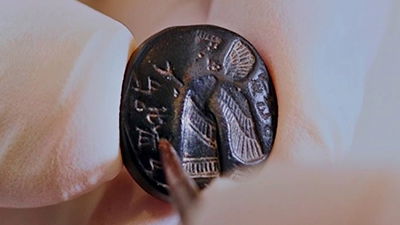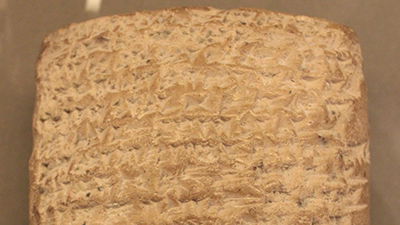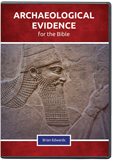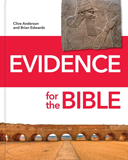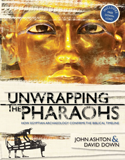The Merneptah Stele
This famous artifact contains an important reference to Israel: how does it relate to the Bible’s history?
The Merneptah Stele (figure 1 below) is most famous for its inscription that lists conquests of Israel and several Canaanite or Philistine city-states by the 19th Dynasty Egyptian Pharaoh Merneptah. It is conventionally dated at 1213 to 1203 BC but with a Revised Egyptian Chronology (REC) date of sometime between 940 and 890 BC. Many archaeologists consider this the only mention of Israel in Egyptian texts, but a much more recent find has called that into question.1 The pertinent part of the stele, which deals with Israel/Canaan, states, “Canaan is captive with all woe. Ashkelon is conquered, Gezer seized, Yanoam [likely the area of Bashan in present day Syria and the Golan Heights area of northern Israel] made nonexistent; Israel is laid waste, bare of seed.”2 The inscribed name of Israel (Figure 2 below) is usually transliterated as “Ysyriar” or “Isrir.”
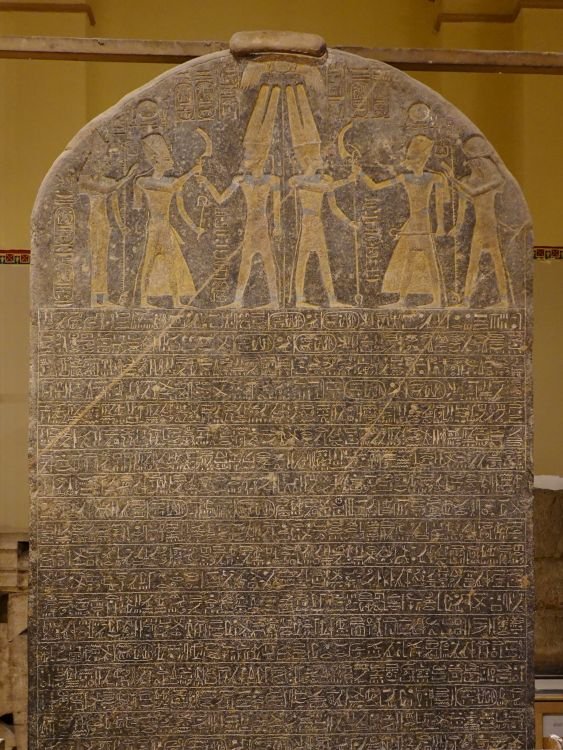
Figure 1. The Merneptah Stele in the Kairo Museum. Image by Oltau via Wikimedia Commons.

Figure 2. Mention of Israel in the Merneptah Stele. Image via Wikimedia Commons.
A Problematic Stele?
The Merneptah Stele has caused some embarrassment to “the late exodus” mindset of those conventional and liberal biblical archaeologists who tried to equate Ramesses II as the pharaoh of the exodus. For Merneptah to have “laid Israel waste” five years into his reign as the stele says, Israel would have had to be in Palestine during his rule. But if Israel left Egypt only 10 years prior to his ascension to the throne (as would be required if the exodus took place during Ramesses II’s reign), they would have still been wandering in the wilderness at this time (and continuing to do so for another 25 years).
For those who accept an early Exodus (1491 or 1446 BC) but maintain a traditional Egyptian chronology, the timing is still problematic. In this scenario, Israel would be in the land of Canaan, but Merneptah’s campaign would fall during the times of the judges when most of Israel was fractured into tribal territories. Although Egyptian pharaohs are prone to boasting in their inscriptions, it seems that attacking a single tribe (or even a couple of tribes) and calling them a “nation” would be embarrassing for any pharaoh. And where is such an Egyptian invasion during the time of the judges mentioned in Scripture? Plus, there is no mention in the stele of Edom, Moab, or Ammon—all of which would have been in the path of Egypt’s armies during this time. While not determinative, the stele text seems to imply a kingdom or, at the least, a strong city-state was vanquished. Additionally, during much of the period of the judges, it was the Philistines who oppressed many parts of Israel. Had Egypt come along and squashed the Philistines, they would have likely been viewed as welcome relief sent by the Lord.
Who Is Merneptah?
An interesting postulation is that 19th Dynasty Pharaoh Merneptah is the biblical Shishak. The timing in an REC is about right; we are told that Shishak, although he only plundered Jerusalem, had conquered many of Judah’s cities (2 Chronicles 12:4). His marching along the coast to Judah would have brought his army into direct contact with the Philistines, who had no love for Egypt and often raided them. Perhaps Shishak thought this a good time to stamp out rebellion throughout the region. It must be noted here that it seems unlikely for Egypt to use a different name to differentiate between the people of the kingdom of Judah and the kingdom of Israel, since the people of Judah were also Israelites (comprising two tribes—Judah and Benjamin—plus the Levites, including temple priests).
An interesting postulation is that 19th Dynasty Pharaoh Merneptah is the biblical Shishak.
The Bible gives no indication that Shishak attacked the northern kingdom of Israel, which at that time would have been ruled by Jeroboam. Indeed, Shishak may well have deliberately skirted Jeroboam’s land since Jeroboam, according to 1 Kings 11:40, had taken refuge with Shishak in Egypt until after the death of Solomon (and, according to tradition, even married one of Pharaoh’s daughters). It wouldn’t make much sense for Shishak, who had many allies, to attack Jeroboam’s newly obtained kingdom, which would be far more useful as an allied buffer state.
And while we acknowledge that Pharaohs often exaggerated their conquests, the stele’s mention of “laid waste, bare of seed” makes much sense of Merneptah as Shishak in light of 2 Chronicles 11:23, which states that just two years prior to Shishak’s invasion, Rehoboam “distributed some of his sons through all the districts of Judah and Benjamin, in all the fortified cities, and he gave them abundant provisions and procured wives for them.” It was these same fortified cities that Shishak destroyed (2 Chronicles 12:4), likely killing many of King Rehoboam’s sons. Note the precise wording of the stele. Unlike Ashkelon (conquered) and Gezer (seized) and Yanoam (made non-existent, i.e., completely wiped out), Israel (Kingdom of Judah) is just laid waste and bare of royal seed. When the biblical text of 1 Kings 14 and 2 Chronicles 11–12 are examined, they seem to correspond remarkably well with the Merneptah Stele.
Two Other Possible Candidates
David Rohl writes quite a lot in his book, Exodus—Myth or History?, about this. He has argued that the short form of Ramesses’ throne name was Shisha, which in early Hebrew writing would be almost indistinguishable from Shishak. (It should also be noted that one of Ramesses II’s Nebty names [signifying rule over Upper and Lower Egypt] was Shesep netjeren Khepri, “the divine image of Khepri,” which could easily be corrupted to Shishak by the Israelites.) In Rohl’s chronology therefore, 19th Dynasty Ramesses II (father of Merneptah) was Shishak.
Rohl and other Egyptologists have proposed that the campaigns highlighted by Merneptah on his stele are depicted on the walls of Karnak, where it is clear that they also include the victories of his father Ramesses II and his grandfather Seti I. The practice of pharaohs including themselves in the successes of their recent family (father and grandfather) was quite common in ancient Egypt. Ramesses II is also the only pharaoh who records on a monument a victory over Jerusalem (Shalem) from the seventh year of his reign. In this view, Merneptah records his victories (likely over the Philistines and Syrians) and adds them to his stele as a continuation of the Karnak record of his father and grandfather.
Some other historians and Egyptologists like Peter van der Veen, Fred Harding, and Peter James favor 20th Dynasty Pharaoh Ramesses III as Shishak. Ramesses III not only fought the “sea peoples” but records that he settled some of those conquered peoples in Canaan. He also fought against a southern invasion from the Libyans. However, there are no attestations to Ramesses III fighting against Israel, so the case for him as Shishak is weaker than either Merneptah or Ramesses II.
An Archaeological and Biblical Insight into the Geopolitics of the Time
If the identification of Yanoam with Bashan (Southern Syria) is correct, then this provides a unique insight into the geopolitical alliances of the time of Rehoboam and his son Abijam (3-year reign) and grandson Asa (41-year reign). Assuming that the northern kingdom of Israel was an ally of Egypt and that Judah was often an ally with Syria during this time (1 Kings 15:17–20), the attack on the Philistines, Judah, and Bashan (while avoiding attacking the kingdom of Israel) makes perfect logistical sense from a military perspective. In fact, in an REC, less than 15 years after Merneptah died, Ramesses III defeated a coalition of sea peoples during two separate battles (likely Philistines and their confederates), which he recorded on his mortuary temple in Medinet Habu.
However, even if the incursion mentioned on the Merneptah Stele is not one that is recorded in Scripture, we can still be confident that the history and theology contained in the Bible is true and accurate, for God’s Word is truth (John 17:17).
If this military incursion into Judah is indeed what is captured on the Merneptah Stele, then we have excellent corroboration that the writers/compilers of the books of Kings and Chronicles wrote of recent events (and were aware of the geopolitical situations) occurring during their lifetime or they drew upon sources written at the time of the events, not hundreds of years later as most critics allege. However, even if the incursion mentioned on the Merneptah Stele is not one that is recorded in Scripture, we can still be confident that the history and theology contained in the Bible is true and accurate, for God’s Word is truth (John 17:17).
Footnotes
- “Does the Merneptah Stele Contain the First Mention of Israel?,” Biblical Archaeology Society, June 2, 2022, https://www.biblicalarchaeology.org/daily/ancient-cultures/ancient-israel/does-the-merneptah-stele-contain-the-first-mention-of-israel/.
- Warren Reinsch, “Merneptah Stele: Proving Israel’s 3,200-Year Existence,” Armstrong Institute of Biblical Archaeology, October 26, 2018, https://armstronginstitute.org/122-merneptah-stele-proving-israels-3200-year-existence.
Recommended Resources

Answers in Genesis is an apologetics ministry, dedicated to helping Christians defend their faith and proclaim the good news of Jesus Christ.
- Customer Service 800.778.3390
- © 2024 Answers in Genesis


